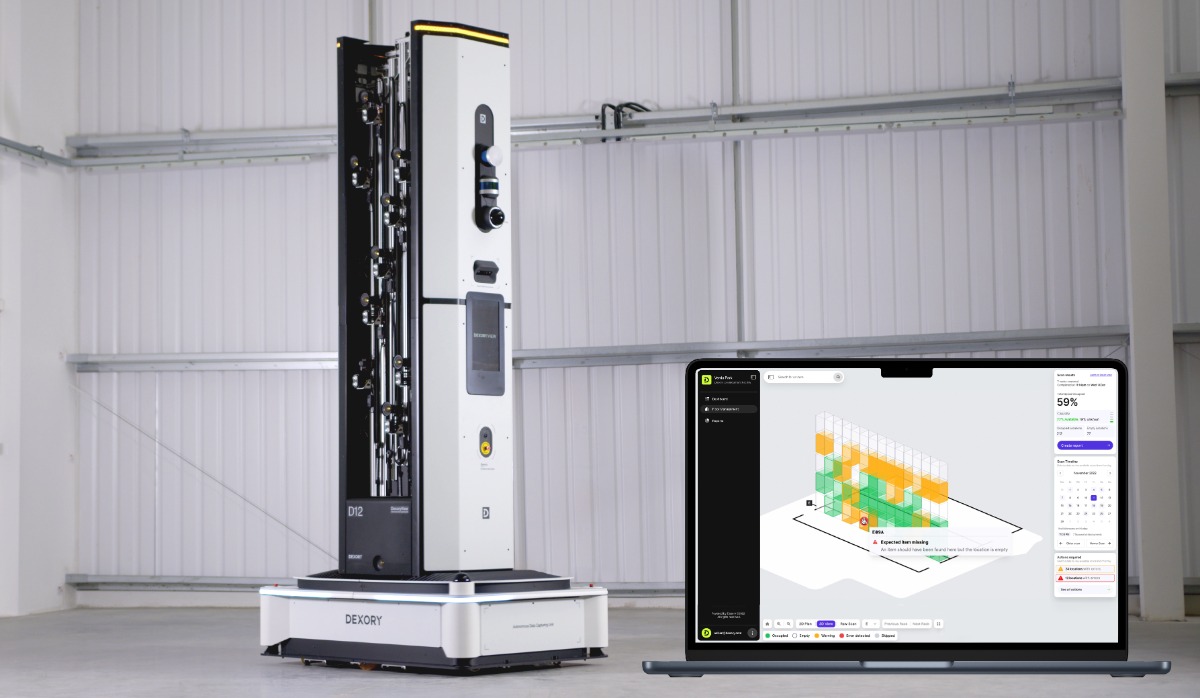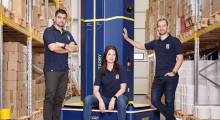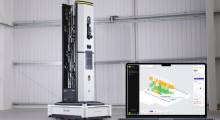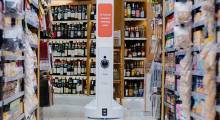People say knowledge is power, and that adage absolutely applies to supply-chain decision makers. Before any decisions can be made, data must be collected from facilities to inform the decision-making process. But unless your facility has a camera pointed at each and every location, gathering accurate and up-to-date data can present a complex challenge.
Andrei Danescu, CEO and co-founder of Dexory, said the U.K.-based company was built around the principle of providing real-time site visibility for warehouse environments where it’s difficult to collect information. Using a combination of robotics and AI software, Dexory gathers and analyzes data to deliver impactful insights to its customers.
“Collecting the data is one bit. What can you use this data for? And how does this transform business operations on a daily basis?” he said. “I can collect all this information - so what? Well, I can transform it into insight - so what? I can make decisions to really take my business to the next level of efficiency.”
A warehouse is a very big space to monitor, so it’s unmanageable for people to review all the data captured by Dexory’s robots.
“Where the AI tools come into play is allowing you to go a lot deeper into this data, allowing you to extract a lot more insights from what you're collecting,” Danescu said. “You can collect the information, but unless you turn it into valuable advice and insight, it's not going to drive the impact that we hope to drive.”
A cobot that rises to the occasion
Dexory deploys autonomous mobile robots (AMRs) designed as collaborative robots (cobots) that can operate around people and other warehouse vehicles.
“As we were bringing this technology to market, we spoke to a lot of customers, and one of the big things people were telling us was, ‘We want to be able to avoid any kind of disruptions.’”

The Dexory team developed a telescoping design outfitted with cameras and barcode scanners on each section that can reach upwards of 40 feet high, allowing robots to scan entire racks in a single pass while still being able to fit through small openings when needed.
“You have doors and you have multiple rooms, especially in the bigger warehouses. So you can't have a robot that is continuously in its tall, fully extended form,” Danescu said. “So we thought, ‘How do you create a system that can operate and collect the whole rack in one pass?’ And that's basically how we came to the concept of the telescopic tower.
Thanks to its vertical robot design choices, Dexory’s robots are capable of scanning over one million square feet and over 100,000 pallets per day.
AI insights from environmental conditions
DexoryView, the company’s AI-enabled digital twin software platform, can create a simulated map of warehouse racking and floor locations, interpreting barcodes and performing 3D image analysis to create a complete inventory data set comprising every location. Dexory also measures environmental conditions, including temperature, brightness, and humidity.
“All this information allows DexoryView - which is the platform that gives and generates all these insights - to create these learnings over time and to inform whoever is running the warehouse either how to optimize things or flag any kind of discrepancies, flag any kind of issues,” Danescu said. “You can start using some of the more advanced AI features to allow you to better organize the way you store goods in the warehouse.”

DexoryView can help warehouse operators rearrange products within their facilities as weather and seasons change to keep them stored within appropriate conditions. For example, Danescu said leather goods need to be stored in a cool, dry environment. DexoryView might suggest moving a pallet of leather goods that arrived in the winter out of a hot, humid area of a warehouse come summertime.
“If it's [stored] in the wrong conditions, it's completely unusable. So you can eliminate a lot of these inefficiencies and a lot of wastage by leveraging this technology that we have,” Danescu said. “We recognize that we won't know everything about the industry early on. So there’s going to be other use cases that we’re going to be wanting to add on top of the existing technology.”
Over time, Dexory’s AI algorithms can determine the best locations to store products within customer facilities, suggesting direct put away locations as products arrive.
Sharing supply-chain level knowledge
Danescu said DexoryView helps deliver a “single source of truth” for warehouse operators about their facilities.
“Imagine you have a platform where anything you want in that warehouse - any location - you can just search for it, and you will see what the stats are,” Danescu said. “What product is there? Is it the correct product? What is your occupancy? How much product do you have available? Has that product been moving around the warehouse? You literally have the complete journey of what's going on in that space.
“You have these huge spaces, these massive warehouses. And then you have the ability - from anywhere you are in the world - to have complete visibility over the operation in that space,” he added. “And not just that space, but if you have the technology in 10 locations, over the entire network. That was really the aha moment, because we thought, ‘Wow, this really has the potential to completely transform the way you run operations.’”
DexoryView can also make it easier to share insights across facilities without sending managers who have learned operational best practices to other warehouses.
“It's very easy to copy and paste the learnings because you have the single source of truth,” Danescu said. “All this learning - all this information - it becomes available to your entire network of warehouses, your entire supply supply chain.”
Dexory expands into North America
Dexory announced at Manifest 2024 that it was entering into the North American market. The company more recently announced the opening of its North American headquarters in Nashville, Tenn. Danescu said setting up a base in the U.S. helps Dexory support local customers faster.

“The other big thing is to make sure that we onboard as many people as we can onto the platform, because this will, in turn, allow us to perfect the offering for the American market,” he said. “The more we learn, the more we work with customers, the more powerful DexoryView becomes, and the faster it is at bringing bigger and bigger amounts of value to them.”
Danescu added, “We're very excited about the market, and mostly very excited about the way people are perceiving the technology and the benefits it brings to them.”
Want to learn more about data management in robots? This article was featured in the September 2024 Robotics 24/7 Special Focus Issue titled “Robots as mobile data platforms.”
DexoryView demo | Warehouse intelligence platform
About the Author
Follow Robotics 24/7 on Linkedin
Article topics
Email Sign Up


















